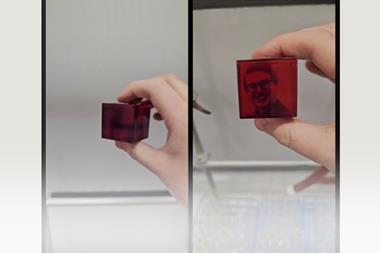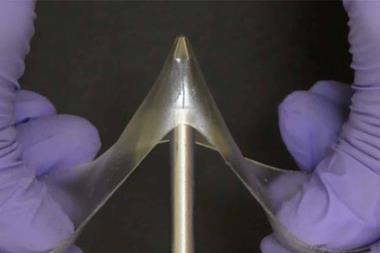Xiao Cheng Zeng and Wei Fa at the University of Nebraska-Lincoln, US, were so inspired after reading about the graphene Pringles reported last year that they decided to investigate equivalents made from boron and nitrogen. The non-planar B40N40H30 nanoplate, which they identified via an ab initio simulation, is expected to change shape in a dynamic flapping fashion owing to its relatively low activation barrier of racemisation.
The study suggested an aluminium nitride version too. Like their carbon-based cousins, the predominately hexagonal BN and AlN Pringles also contain five seven-membered rings and one five-membered ring, which results in a stable, double concave structure. Both can be viewed as isoelectronic with the C80H30 Pringle.
Since the warped B40N40H30 possesses a narrower electronic HOMO–LUMO gap than that of the planar B39N39H30, it is expected that designing BN-based nanoplates to include non-hexagonal ring defects can be an effective way to modify their electronic properties.
References
This paper is open access. Download it here:
W Fa, S Chen and X C Zeng, Chem. Commun., 2014, DOI: 10.1039/c4cc02294g






















No comments yet